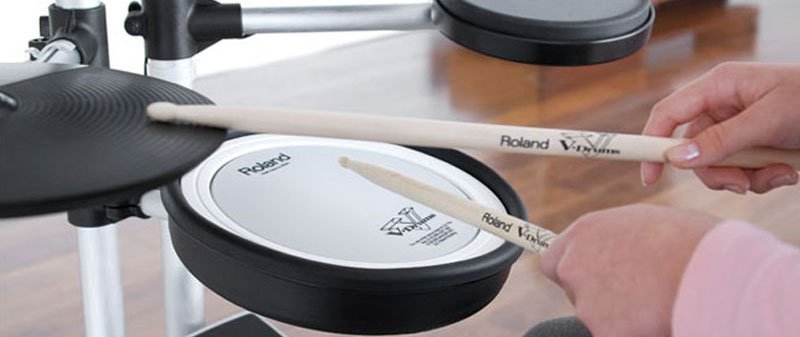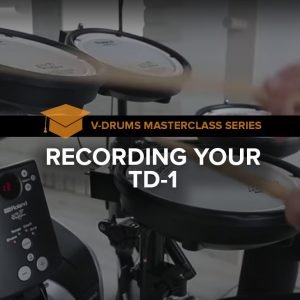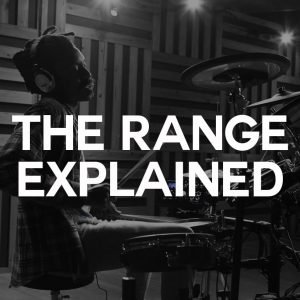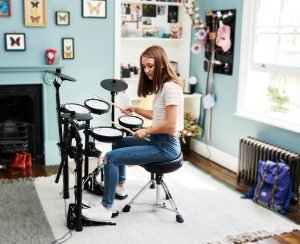Contributed by Allan Leibowitz, Editor of digitalDrummer
You always find yourself tapping along when you hear music. You’ve never learned music, but you think it would be fun to get behind a drum kit. However, you fear it’s too late because you didn’t start as a kid and you think you’ve got too much to learn.
The good news is that there’s still time and it’s not hard to master the drum kit if you have natural rhythm, the right motivation and some time to practise.
I know plenty of drummers who picked up sticks for the first time in their 40s – and are now very competent players: some of them even do paid gigs in local bands.
Recommended Article: It’s never too late to learn the drum
The benefits of learning the drums
So why would you want to learn drums? Drumming combines a number of benefits:
1) A musical outlet: Many of us are frustrated performers and have a strong need to make music. It’s not enough to just listen to our favourite songs – we want to play them and make them our own.
2) Physical activity: Drumming involves a fairly intense work-out, utilising all four limbs and a range of muscles. It helps with hand-eye co-ordination and dexterity. (See this article on the health benefits of drumming)
3) Psychological benefits: Drumming engages both sides of the brain and has been shown to improve cognitive functions. It also promotes mental health by allowing you to de-stress and take your mind off your problems.
4) Social networking: Drumming provides a shared social experience when you hook up with like-minded musicians. If you end up in a band, that also gives you lots of opportunities for social connections – something that obviously becomes more valuable as you get older.
5) Enjoyment: Let’s be honest: you’re not going to become a professional drummer if you start at 40. At best, you may earn a few bucks here and there – possibly even enough to subsidise your drum kit. But you will have lots of fun mastering the instrument, learning songs and playing – especially if you’re fortunate enough to get opportunities to perform in public
How to start learning
I’ve interviewed scores of top drummers – the musicians you’ve probably seen on TV – or on stage, if you’re lucky. Most of them started really young, displaying their talent at a very early age. Often, they had at least one musical parent who recognised their talent and encouraged their interest, placing them on a path to a career in music.
If you missed out on that early start, but still feel you can get something out of playing drums, there is a basic choice as you set out: do you find a teacher and take lessons or figure it out for yourself?
If you have the time and funds, there’s no doubt that the best way to start is with lessons. There are many drum teachers who specialise in teaching adults – even beginners. They can assess your natural abilities and identify your strengths and weaknesses.
Importantly, teachers can set you up with “good habits” – from posture and the position of your kit to how you hold your sticks and place your feet on the pedals. If you get off to a good start, it’s much easier to develop your technique and expand your repertoire.
Drummers who don’t benefit from an experienced teacher often develop bad habits that are hard to break later.
Recommended article: Learn to Play Drums
Do you need a drum kit to learn?
The short answer is “no, but ..”. Sure, you can learn drums with simple instruments like a pair of bongos or a cajon. Or, as many of us did as children, with a good pair of sticks and a practice pad.
But, if you really want to have fun, you can achieve so much more with a full kit that combines drums and cymbals and allows you to use a range of sounds to make interesting rhythmic patterns.
Recommended article: Buying a drum kit
DIY drum learning
Of course, taking lessons is not always feasible. In fact, sometimes it’s not even necessary. A few people are “born drummers” who just know innately what to do and learn just by watching and listening to other drummers.
Thankfully, for the rest of us, there are many paths to drumming improvement – a lot of them free and readily available
1) Books, CDs and DVDs
For many years, these were the only resources available to would-be drummers. There are instructional books and video products on everything from how to hold your sticks to drum patterns for various genres. Most books require the ability to read music, but some of them even help with that skill.
2) Video courses
Before YouTube, there were thousands of drum instruction courses, most of which consisted of workbooks and videos, with detailed lessons, practice schedules and drumless songs to play along to. While technology may have moved on, some of these courses have stood the test of time and offer excellent value for money. But they do require some perseverance and dedication, otherwise they become expensive paperweights!
3) YouTube
Everything you need to learn drums is available for free on YouTube – if you have the time to look for it!! The video-hosting service has a wealth of drum instructional material, covering everything from the basics to advanced lessons. Some are very slick productions, with multi-camera footage and big-name artists sharing their secrets. Others are amateur covers of songs you might like to learn. Best of all, it’s all free and generally very helpful – and the comments will help you sort the wheat from the chaff.
4) Online courses
If searching for suitable material on YouTube is too much of a challenge, then perhaps you should consider one of the online courses. These are offered in many different forms, usually on a subscription basis. Drumeo is one of the most popular online courses, bringing together some of the world’s leading drummers for detailed instructions on all aspects of drumming.
5) Apps
If you’re using an electronic drum kit, there are a number of computer programs and apps that act as a virtual instructor. I’ve been impressed with Melodics, an online instruction tool that combines audio and visual cues in a “guided path” of lessons covering the skills and techniques you will need as a drummer. Best of all, by connecting your drum kit to your computer, Melodics actually monitors your playing and shows what you’re doing well and where you need more practice.
6) Tools on your electronic drum kit
Electronic drum kits have become more user-friendly than ever, and are now filled with teaching tools which help develop your timing, accuracy and drumming fluency. The tools are built into the drum module (or brain) and can be easily configured for all skill levels. And you don’t need a high-end electronic drum kit to access these tools: the same functionality is available even on some beginner kits.
Conclusion
If you’re a frustrated drummer keen to unleash your inner Ringo, John Bonham or Phil Collins, learning drums has never been easier. There are so many resources to learn on your own, from free online videos to apps and tools built into the latest electronic kits.
Drumming is fun, and with so much technology at your grasp, practising will never be a chore. If you have an electronic kit, you’ll be able to play along with your favourite songs and listen through headphones, so you’ll be able to hone your skills without disturbing your family or the neighbours. And won’t they be surprised when you strut your stuff out loud for them?








